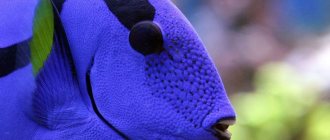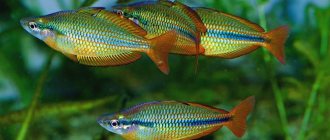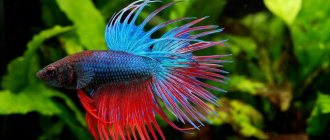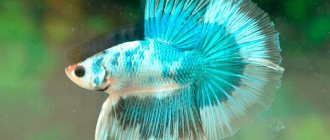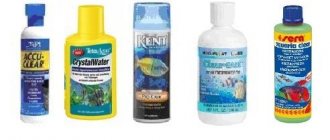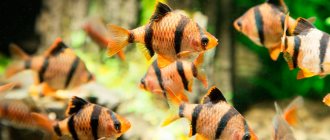Corydoras Sterbai (lat. Corydoras sterbai) is one of many catfish in the Corydoras genus, but very popular because of its variegated coloring. This is a very easy-going, schooling fish that is well suited for community aquariums, but needs a spacious bottom. Like all corydoras, he is active and playful, and it is interesting to watch the flock. And the variegated coloring and orange edging of the fins distinguish it from similar species in the genus.
Description
Сorydoras sterbai or Corydoras Sterba is a bottom-dwelling species belonging to the ray-finned fish from the armored catfish family. Common as an aquarium fish. It was named in honor of the famous zoologist from Germany Gunther Sterba. Natural habitat - Brazil and South America, lives in large numbers in the rivers Guapora, Amazon and Mato Grosse, in its upper reaches.
Lives in fresh waters, prefers rivers and streams with weak currents. Sometimes found in small swamps, creeks, lakes, and ponds. In such reservoirs, a small amount of oxygen reaches the bottom, so Shterba fish have learned to breathe air.
Look at this addition on Instagram
Addition, expansions Evgeny Aquarist (@aqua.fish.club) Cher 21, 2016 about 9:44 PDT
Appearance
The body size of the Corydoras is 6 cm; in its natural environment, the body length is a couple of centimeters longer. They have a dull color, but it still attracts attention. The main background is dark gray-brown. The entire body is covered with small spots of light color, pale yellow, beige or white. On the head, the spots are scattered chaotically, and on the body, fins and tail they form visible lines resembling dotted lines. The number of stripes ranges from 4 to 8.
This spotted coloring makes it look similar to Schultz's corydoras. But the difference is that Schultz’s catfish is white with dark spots, and Sterba’s catfish is the opposite.
The pectoral and ventral fins are orange-yellow. The iris of the eyes has the same color.
Behavior
Corydoras cannot stand loneliness. The only possible way of life is to keep them in flocks ranging in size from 5 to 20 representatives. Fish have a peaceful temperament and no aggression towards other fish or members of their own species. Skirmishes occur only during the spawning season, when males fight for females. Aquarists note its timid nature, so it is better not to make sudden movements and not give the fish a reason to be scared.
Habitat in nature
This corridor lives in Brazil and Bolivia, in the basin of the Rio Guapore and Mato Grosso rivers. It is found both in the river and in streams, tributaries, small ponds and flooded forests in the river basin.
Nowadays it is almost impossible to find individuals caught in the wild, as they are successfully bred on farms. These fish are stronger, tolerate different conditions well and live longer than their wild counterparts.
The catfish received its specific name in honor of Günther Sterba, honorary professor of zoology at the University of Leipzig, member of the Royal Swedish Academy of Sciences.
Professor Shterba is a scientific ichthyologist, author of several popular books on aquariums, which were on the tabletop of hobbyists in the 80s of the last century.
Content
For a comfortable stay, introduce a flock of Corydoras. The lid of the aquarium should not fit tightly, because catfish sometimes swim to the surface for oxygen. Provide places for the fish to rest and hide. Catfish do not tolerate salts or chemical impurities in the water at all, so be careful and monitor these indicators. Change 1/3 of the water weekly.
Aquarium
For a school of fish of 6 representatives, an aquarium of 100–150 liters will be required. The length of the wall is 50–60 cm, and the bottom space should have a large area. Places of shelter are established: driftwood, turrets, stone embankments, coconuts, shards.
Water parameters
Catfish are heat-loving and need a water temperature of at least 25 degrees. Water hardness does not exceed 20 dH, and acidity is about 7 pH.
Plants
Vegetation in the aquarium is necessary for the normal development of catfish. Corydoras lay white eggs on it during spawning; they hide in thick grass when in danger. Protects fish vegetation from bright light, creating shady places.
Because catfish love to dig, choose vegetation with a developed root system that will not be damaged, or buy artificial plants. Another option is plants that do not have a root system and float freely on the surface.
Suitable plant species:
- Vallisneria;
- water fern;
- cinema;
- cryptocoryne;
- Anubias;
- riccia;
- duckweed.
Priming
It is better to choose soil with medium-sized granules, for example, sand, crushed pebbles or gravel. The edges of the bottom substrate should not have chips or cracks, which could damage the catfish’s snout when digging. The soil is preferably dark.
Equipment
When digging up the soil, corridors raise turbidity and dust in the water, so a powerful filter with a sponge in the aquarium is a must. Aerating devices are added at will, since catfish are able to breathe air, but for this, air must circulate without problems between the lid and water. It is better to install a compressor that is not too powerful.
Diseases
Sterba Corydoras have a good immune system, so they rarely get sick. More often, catfish injure themselves on sharp objects located in the aquarium.
Newly purchased fish must be quarantined, since purchased fish can often carry bacterial and fungal infections. Quarantine must last at least 30 days. If, after purchasing a catfish at the market, you immediately place it in a common aquarium, it is possible that it will infect other underwater inhabitants with fungal or bacterial diseases.
From time to time you need to observe your pet's behavior. It happens that catfish begin to breathe frequently and float to the surface to take a breath of air. This behavior may be due to the fact that the fish was poisoned by nitrogen in a polluted aquarium and began to experience a lack of oxygen.
At home, corridors can:
- get stressed during a fight with your nimble neighbors;
- poisoned by chemical compounds: nitrogen, copper, ammonia, nitrates;
- be exposed to fungal diseases;
- damage the surface of the body with sharp objects;
- may be susceptible to external parasites.
After purchasing, the catfish is placed in a separate container and given time to adapt. Only after he has settled in and spent time in isolation can he be transferred to a common tank.
If you find growths on the body or uncharacteristic spots, you need to contact a veterinarian; he may have been exposed to parasites or a fungus. Good care and attention will help your pet recover quickly.
Diet
The natural food of corydoras is earthworms, crustaceans, insect larvae and insects themselves, and vegetation. When living in aquariums, they feed on food particles that have settled to the bottom. When hungry, they rise to the surface for food. Make sure that other nimble fish do not eat catfish or buy heavy food particles that quickly settle to the bottom. They feed at dusk or dark times of the day.
Fish are considered omnivores, but a varied diet will ensure your pet's health. They can be fed all types of food: dry, live, frozen, special flakes or compressed food in the form of tablets or granules. But do not feed protein foods to catfish too often.
Artemia, bloodworms, earthworms, daphnia, and tubifex work well. Feed 1-2 times a day.
Who do they get along with?
Due to their peaceful nature, they get along with all fish. But aggressive and territorial fish, such as cichlids and discus, will attack catfish, so it is best to avoid their proximity. Characins, carp, all catfish, tetras, labyrinth fish and viviparous fish are well suited:
- Gourami.
- Guppy.
- Gold fish.
- Astronotus.
- Sword bearer.
- Mollies.
- Ameka.
- Annifis.
Compatibility
Like all corydoras, they live in groups; it is recommended to keep at least 6 individuals in an aquarium. In nature, they live in schools numbering from several dozen to several hundred fish.
Excellent for general aquariums, in general, they do not bother anyone. But they can be touched, so avoid keeping them with territorial bottom-dwelling fish, such as cichlids.
Moreover, Shterb has spines that can kill a predator trying to swallow a fish.
Reproduction
Prepare a separate spawning tank in which spawning will take place and fry will be raised. A substrate is arranged in it, plants are planted on which the eggs will be located. Its size should accommodate a school of 5-6 fish, but if the volume does not allow, then a female and 1-3 males should be removed from the general school.
To bring spawning closer, the environmental conditions in the aquarium are changed. Water changes become daily, and the amount of feed increases. This way the fish will understand that now is a favorable period for procreation. The water temperature is lowered because in nature this means the onset of the rainy season, which provides an abundance of food.
Sex differences
Sterba's catfish have well-developed sexual dimorphism and it is not difficult to distinguish representatives.
- Females. They have a larger build and are larger than males. The belly is rounded and convex, and the coloring is more modest.
- Males. They are distinguished by their beauty and graceful physique, but smaller in size. The body is elongated, the stomach does not protrude. The fins and part of the abdomen are brightly colored orange; This is especially noticeable during the breeding season.
Breeding
Stimulation for the beginning of spawning will be a daily change of water by half the volume, a decrease in its temperature by about a couple of degrees, and an increase in food. The fish will understand that the time has come for procreation. Females are ready to breed when their bellies become round from the eggs. There are at least 2 males per one. After the courtship period, the female chooses one male.
A special spawning tank is required for breeding. Its volume depends on the size and number of fish. For 4 pieces you need 20 liters. It is necessary to specifically add a substrate, that is, plants with large leaves, Java moss. Be sure to equip the container with a high-quality compressor and filter. They are additionally covered with a mesh with small cells.
The female first cleans the area and glues the eggs there. Depending on the age and size of the fish, the number of eggs can be from 30 to 200. After this, all catfish are returned to the common aquarium. The temperature in the spawning tank is increased to +26 o C. The incubation period lasts from 4 days to a week. Young Corydoras Sterba are fed with ciliates and microfeed. After a year they are considered adults.
Reviews
Aquarists who have purchased this catfish note their interesting behavior and eye-catching spotted color. They are nimble and do not allow the aquarium to look motionless. But some buyers have difficulties with reproduction, and the parent catfish eat the eggs. Another small minus is that they cannot be kept alone, only in a flock.
Which neighbors should you choose?
Catfish is a hospitable host and a friendly neighbor at the same time. Whatever goal the aquarist has - to select individuals for a group of catfish that complement the upper sections of the water house or to add calm and balanced bottom-dwelling friends to the flocks of almost flying neon fish - it will be achieved with the help of corydoras shterba. Their presence seems to be a guarantee of peace and order.

